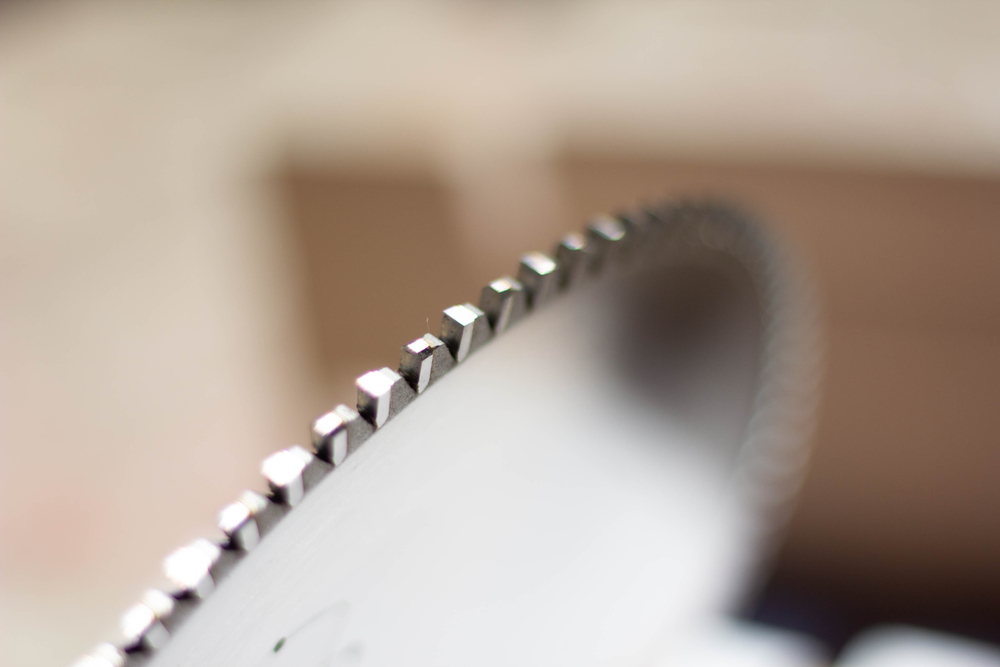
Steel vs. Carbide-Tipped Blades: Which is Best for Your Needs
January 3, 2025 5:00 pm Leave your thoughtsWhen it comes to choosing the best cutting blades for your projects, two popular options are steel and carbide-tipped blades. Each type has its own unique set of advantages, making it essential to understand the differences between them in order to choose the right blade for your specific needs. Whether you’re a contractor, a DIY enthusiast, or simply someone who wants to get the job done efficiently, this guide will break down the key differences between steel and carbide-tipped blades. We’ll also highlight the best cutting blades in Anchorage, AK, for those in the area.
Understanding Steel Blades
Steel blades are one of the most common types of cutting blades used for a variety of tasks. Steel, in its purest form, is a metal alloy composed mainly of iron, with varying amounts of carbon. When this material is made into cutting blades, it tends to be a more affordable and versatile option, offering great performance for many applications.
Benefits of Steel Blades
- Cost-Effective: One of the major benefits of steel blades is their affordability. They are often the go-to choice for budget-conscious consumers or those who don’t require a blade with the highest durability.
- Ease of Sharpening: Steel blades are relatively easy to sharpen. This is a significant advantage if you’re looking for a blade that can be reconditioned and used for extended periods.
- Versatility: Steel blades are versatile, making them suitable for a wide range of applications, from woodworking and metalworking to general-purpose cutting tasks.
- Good Performance on Softer Materials: Steel blades perform well when cutting through softer materials like wood, plastic, or soft metals. For most casual DIY projects, steel blades often get the job done effectively.
Drawbacks of Steel Blades
- Limited Durability: Although steel blades are sharp, they may wear down more quickly compared to carbide-tipped blades, especially when used for harder materials. Over time, the edge can become dull, requiring more frequent sharpening or replacement.
- Heat Sensitivity: Steel can heat up rapidly during cutting, which can affect its performance, especially in high-demand applications. Excessive heat may cause the blade to lose its sharpness faster.
- Not Ideal for Harder Materials: While steel blades work well for softer materials, they may struggle when tasked with cutting harder substances like concrete, stone, or certain metals.
Exploring Carbide-Tipped Blades
Carbide-tipped blades are made with carbide, a hard and durable material that is often mixed with other metals to form a composite. The tips of carbide blades are designed to be more resistant to wear and heat, making them ideal for tasks that require extreme durability.
Benefits of Carbide-Tipped Blades
- Enhanced Durability: The primary advantage of carbide-tipped blades is their exceptional longevity. Carbide is incredibly hard, meaning the blades can maintain their sharpness much longer than steel blades.
- Heat Resistance: Carbide-tipped blades can withstand higher temperatures without losing their cutting effectiveness. This makes them ideal for heavy-duty cutting tasks where heat build-up might be a concern, such as when working with tough materials.
- Precision and Clean Cuts: Carbide-tipped blades are known for their ability to make precision cuts, which is particularly important in applications that require high accuracy. They can handle fine work with greater ease than steel blades.
- Efficiency in Cutting Hard Materials: Carbide-tipped blades are designed to cut through harder materials with ease. Whether you’re working with dense hardwoods, masonry, or tough metals, these blades excel in high-impact cutting tasks.
Drawbacks of Carbide-Tipped Blades
- Higher Cost: One of the most significant downsides of carbide-tipped blades is their higher initial cost. While they may offer better performance and longer-lasting durability, they are more expensive upfront compared to steel blades.
- More Difficult to Sharpen: Sharpening carbide-tipped blades requires specialized equipment due to the hardness of the material. This makes maintenance more complicated and may necessitate professional sharpening services.
- Brittleness: While carbide is incredibly hard, it can also be brittle. If a carbide-tipped blade is dropped or mishandled, the tips can chip or break more easily than steel blades, which tend to be more flexible.
Key Differences Between Steel and Carbide-Tipped Blades
Now that we’ve examined the benefits and drawbacks of both steel and carbide-tipped blades, it’s important to compare them head-to-head in various categories. Here’s how the two types of blades stack up:
Durability and Longevity
Carbide-tipped blades are far more durable than steel blades. The carbide tips resist wear and tear, maintaining their sharpness much longer than steel blades. If you’re working on high-volume projects or need a blade that can handle heavy-duty tasks, carbide-tipped blades are the better choice.
Steel blades, while effective for many tasks, will wear down faster and require more frequent sharpening or replacement. However, if you’re on a budget and working with softer materials, a steel blade may suffice.
Performance on Hard Materials
When it comes to cutting through tough materials like concrete, stone, or metal, carbide-tipped blades outperform steel blades. The hardness of carbide allows it to easily slice through dense and abrasive materials without losing its edge.
Steel blades, on the other hand, may struggle with hard materials, and their cutting efficiency will decrease over time. If you plan to cut through tough substances regularly, carbide-tipped blades are the better investment.
Cost Considerations
Steel blades are more affordable and widely available, making them a practical choice for casual or budget-conscious users. If you’re doing light work or just need a blade for occasional use, a steel blade can save you money without compromising too much on performance.
Carbide-tipped blades come with a higher price tag, but their durability and efficiency in heavy-duty tasks often justify the investment. If you’re involved in professional or industrial work, the increased upfront cost will be offset by the longer lifespan and superior cutting performance.
Maintenance and Sharpening
Steel blades are easier to sharpen and maintain compared to carbide-tipped blades. If you’re someone who likes to maintain your own tools, the ability to quickly and easily sharpen a steel blade is an advantage.
Carbide-tipped blades, however, require specialized equipment for sharpening. This can make maintenance more difficult, and you might need to rely on professional services. Despite this, the longer lifespan of carbide-tipped blades can make the added cost of professional sharpening worthwhile.
Best Cutting Blades in Anchorage, AK
If you’re located in Anchorage, AK, and looking for the best cutting blades, you’ll find several options that cater to different needs. Whether you’re in need of steel or carbide-tipped blades, there are local suppliers and stores that offer high-quality products for a variety of applications.
- Anchorage Tool and Supply – This store offers a wide range of cutting blades, from steel to carbide-tipped options. They are known for their knowledgeable staff and excellent customer service, helping you find the perfect blade for your needs.
- Northern Tool + Equipment – Northern Tool is another great option for those seeking reliable cutting tools. They carry both steel and carbide-tipped blades suitable for a variety of industries, including woodworking, metalworking, and construction.
- Home Depot Anchorage – For DIY enthusiasts and homeowners in Anchorage, Home Depot is a convenient place to find high-quality cutting blades. They carry a wide selection of steel and carbide-tipped blades for general use and specialized cutting tasks.
- Spenard Builders Supply (SBS) – SBS offers a range of construction tools and materials, including cutting blades for contractors and DIYers. If you’re working on a large project, SBS is a great place to source durable carbide-tipped blades for your heavy-duty cutting needs.
Conclusion
Choosing between steel and carbide-tipped blades depends largely on the specific tasks at hand and your budget. Steel blades are affordable and versatile, making them a great choice for general-purpose cutting tasks. However, if you need a blade that offers superior durability, heat resistance, and long-lasting sharpness, carbide-tipped blades are the better option. Whether you’re working with softwood, metal, or tough masonry, carbide-tipped blades provide the reliability and performance you need for demanding projects.
For those in Anchorage, AK, there are plenty of local suppliers offering a variety of cutting blades to suit your needs, from everyday steel blades to high-performance carbide-tipped options. Consider your project’s requirements, your budget, and the materials you’ll be working with to make the best choice for your cutting needs.
Got questions about cutting blades? Let us help! Call us today to learn more!
Categorised in: Tenryu Saw Blades
This post was written by admin

